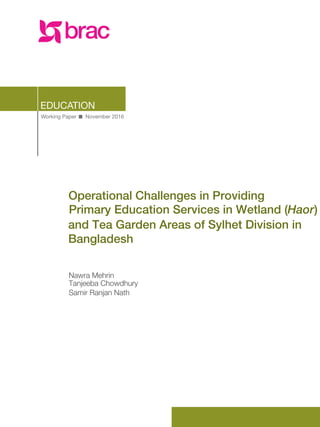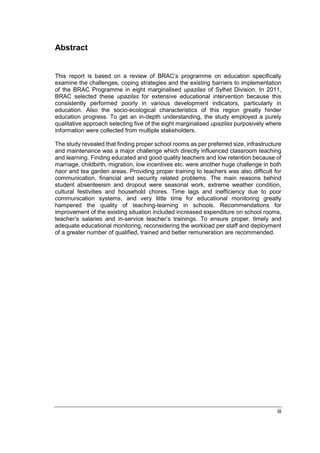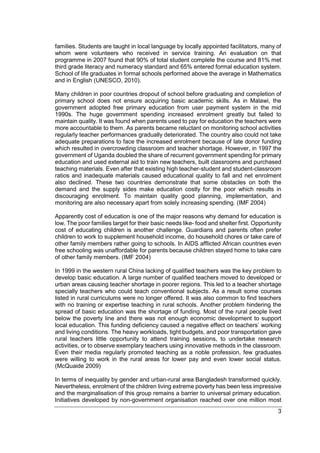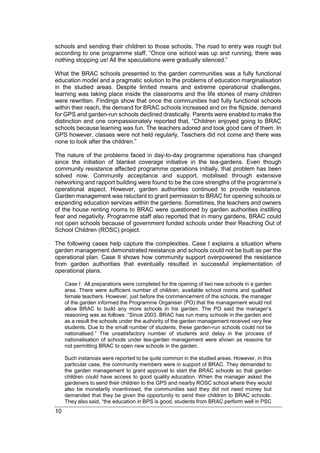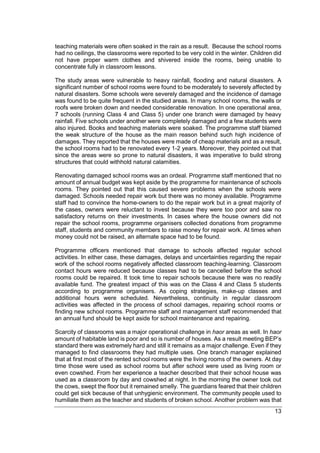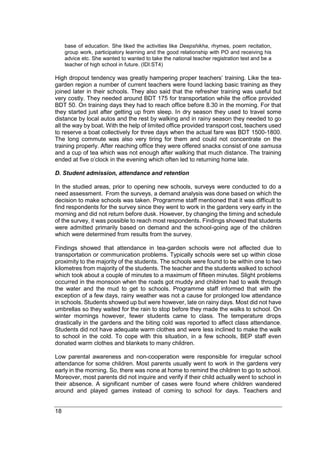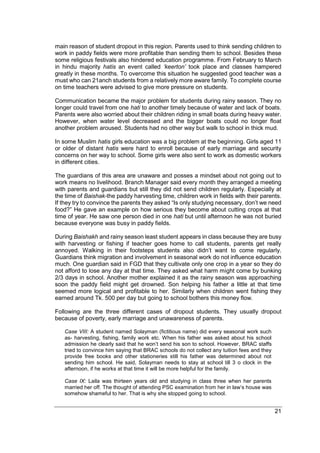This document summarizes an operational study conducted in eight marginalized upazilas of Sylhet Division in Bangladesh that have consistently underperformed in education and other development indicators. The study examines challenges faced in providing primary education services in wetland (haor) and tea garden areas. Major challenges identified include difficulties finding proper school infrastructure and qualified teachers, high teacher turnover, and barriers to education like seasonal work, weather, and household responsibilities that impact student attendance and dropout rates. Educational monitoring is also hindered by poor communications, limited staff training time, and heavy workloads. Recommendations focus on increasing spending on schools, teacher salaries/training, and deploying more qualified educational staff.
